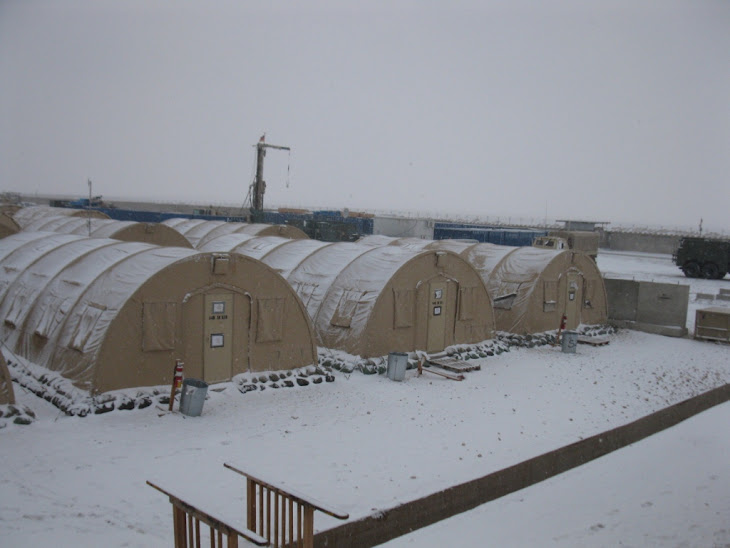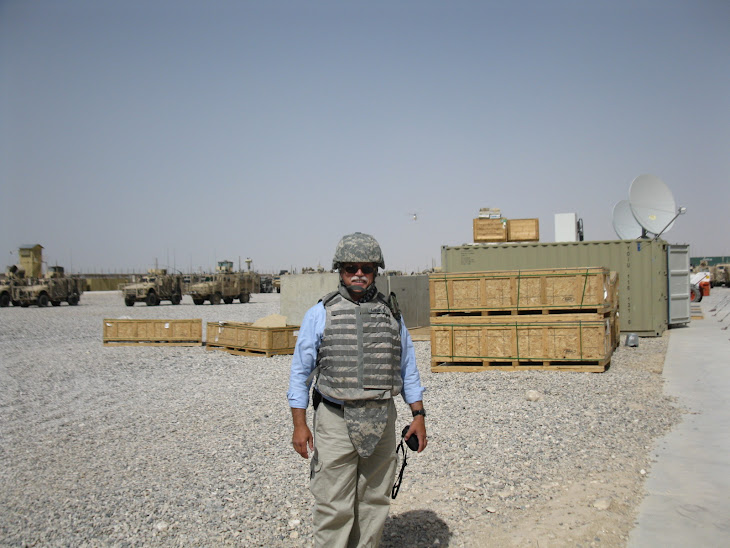SOP for CI training
Prior to the start of the Constructor Inspector (CI)
training program, all trainees shall read and comply with the 577 EPBGI
32-1005, Construction Inspector Program, dated 20 June 2011 (or the latest
version). This document explains the role of the CI, gives guidance for the
performance of the CI, and provides an overall definition for the EPBS role for
construction in Afghanistan.
The Construction Inspector’s role for Camp Marmal is to
provide oversight of contracted construction efforts. CI’s do not provide oversight
for troop labor. It is important for the CI to have a basic understanding of
the responsibilities for his/her projects. The best way to become familiar with
the project is to read and understand the contract, statement of work (SOW),
and drawings/prints. CI’s are: the technical
subject matter experts; the” eyes and ears” of the contracting officer and
Contracting Officer’s Representative (COR); and the key to a successful
construction completion.
CI’s observe, document, and report. It is imperative to keep
good records of the daily activities for each project. Maintaining daily logs,
taking pictures, tracking e-mails, providing input for official letters, and maintaining
the AF1477 report are the minimum requirements for good record keeping.
Items to consider for training the CI:
1. Horizontal
work. Horizontal work is: any work that proceeds along a horizontal path, i.e.,
roads, parking aprons, drainage ditches, runways, laydown yards, tent pads,
taxiways, and other similar construction.
Things to consider when performing
horizontal work:
a. Mobilization
to the site
i.
What type of equipment will be brought to the
site
ii.
How many pieces of equipment will be brought to
the site
iii.
Where is the area to park equipment at the end
of the day
iv.
Where is the laydown area for material
b. Area
affected by work
i.
Who is in charge of the area where the
contractor is working (stakeholder)
ii.
Interface with area owner to ensure owner is
aware of work and duration of work
1. Does
the owner have special requirements (limited access/time, numerous missions
that would preclude work)
2. Will
the owner be there for the duration of the work
c. Who
are the stakeholders affected by work
i.
Anyone who has a vested interest in the work
d. Security
around the work area
i.
Special requirements for access to work area
e. Subject
matter experts to help with specific areas of construction inspection
f.
Work is not to interfere with mission
2. Vertical
work. Vertical work is: any work that proceeds perpendicular to the ground,
i.e., buildings, basements, towers, etc and usually involves numerous
construction disciplines. Horizontal work is usually the first step to starting
vertical work: clearing the land, rough grade elevations, pouring the slab,
etc.
Things to consider when performing vertical
work
a. Mobilization
to the site
i.
What type of equipment will be brought to the
site
ii.
How many pieces of equipment will be brought to
the site
iii.
Where is the area to park equipment at the end
of the day
iv.
Where is the laydown area for material
b. Area
affected by work
i.
Who is in charge of the area where the
contractor is working
ii.
Interface with area owner to ensure owner is
aware of work and duration of work
1. Does
the owner have special requirements (limited access/time, numerous missions
that would preclude work)
2. Will
the owner be there for the duration of the work
c. Who
are the stakeholders affected by work
i.
Anyone with a vested interest in the project
d. Security
around the work area
i.
Special requirements for access to work area
e. Subject
matter experts to help with specific areas of construction inspection
f.
Work not to interfere with mission
3. Prior
to starting any work in Camp Marmal (and the supported FOB’s, PRT’s, COP’s) you
must have a certificate of mine clearance. This is for the safety of the
contractor, the escorts, and anyone accessing the work site. Make sure the
cleared mine certificate is part of the contract documentation.
4. Escorts
a. Know
the rules for escorted personnel
i.
Camera use
ii.
Cell phone use
iii.
Other Allowed/disallowed items
b. Who
provides the escorts
i.
Who do you call in case of an escort no-show for
the start of the work day
ii.
Where is the location for the escort Contracting
Officer Representative (COR)
c. What
is the name and rank of the senior escort on site
d. How
many escorts are on site
i.
What is the ratio of escorts to contractors (location
specific)
e. What
are the working hours for the escorts
f.
Where will the escorts meet the contractor to
pick them up
g. Will
the escort provide transportation to the work site from the pickup point
h. Will
the escorts provide water for the contractor
i.
Is there sufficient water (one liter per hour,
per person during the hot summer days)
i.
Are there sufficient toilet facilities for the
contractor
i.
If not, who do you contact to have porta-lets
delivered to the site
1. You
may need as long as 30 days to allow the delivery and services to be set up.
j.
What time does the escort require the contractor
to take lunch
5. Contract,
Statement of Work (SOW), and drawings
a. Become
very familiar with all documents
i.
What type of contract
1. Fixed
Firm Price
2. IDIQ
3. Time
and Material
4. Services
5. Other
ii.
Are there any contract modifications
iii.
What is the Period of Performance
iv.
Special provisions
1. Local
holidays
2. Unexpected
base closures
v.
Is there Bill of Quantities (BOQ) associated
with material/equipment
1. Make
sure the contractor provides the material and equipment specified in the BOQ
2. Check
the material delivery for type, grade, quantity against the BOQ
vi.
Specific Contract Line Item Numbers (CLIN)
1. This
will be useful for your final inspection and for your financial obligations
(DD250)
b. Does
the SOW match the drawings
c. Does
the SOW make sense to you
i.
Ask the KO/COR for clarification if you have
questions. If you have questions, the contractor will probably have the same
questions.
d. Who
is the Contracting Officer (KO)
e. Who
is/are the Contracting Officer Representative(s)
i.
What is the function of the COR
(construction/services)
ii.
Where is he/she located
f.
Do you have all the referenced material
mentioned in the SOW
i.
This is important to the contractor. He must
have all the specs available to him to effectively carry out his work.
g. Do
you have all the current drawings mentioned in the SOW
i.
Are you following revision control for drawings
6. Other
documents to consider for reporting on your inspections
a. AF
1477
b. DD250
(when you are responsible for preparing – location specific)
i.
Ensure the DD250 matches the CLIN and the
contract information.
c. AF
1391 (when part of O&M)
d. AF
1354 (When part of O&M)
e. Request
for Information (location specific – see your KO for the local form)
f.
Location of documents on your local share drive
g. Pictures
of your inspections
i.
Location on share drive
ii.
File by project number and date (month/day)
h. Hard
copy for your personal records (backup to soft copy, printed pictures are not
necessary unless part of specific communications such as a punch list)
7. Important
things for the CI to remember
a. Only
the KO can direct the contractor
i.
CI’s cannot change the scope of work
ii.
CI’s cannot change the cost of the contract
iii.
CI’s cannot accept change requests.
1. contractor
to use the local RFI
2. CI
can pass to KO, but the CI takes the responsibility for delivery. This can be a
dangerous practice: the contractor now expects you to be the contractors
representative to the KO
b. CI’s
cannot direct the escorts
c. CI’s
will: Observe, Document, and Report
d. When
possible, use the buddy system – take someone with you during your inspections
e. Keep
a complete record of your observations
f.
Record your observations
i.
In writing
ii.
With pictures
iii.
With a voice recorder (when allowed by your
chain-of-command and when you need to remember large quantities of information:
large projects)
g. CI’s
can stop work ONLY for safety, security, or gross violation of the contract.
i.
contractor
concealing/hiding: shoddy workmanship,
defects, or incomplete work
1. CI
must immediately notify the KO or COR
a. Use
e-mail to have a trackable record
b. make
sure to follow up with the notification (suspense file)
h. Make
sure the contractor has the SOW and drawings on site every day.
i.
Do not sign anything the contractor gives you.
j.
Do not accept contractor bids or company
portfolio’s from the contractor
i.
Once you accept portfolios from the contractor,
the contractor will consider you an official government agent for contracting.
k. Ask
the contractor leading-questions to help the contractor understand his
responsibilities (train the contractor)
l.
Do not give the contractor you personal email.
i.
Work email is acceptable
ii.
Use discretion and caution when giving the
contractor your personal phone number
m. Give
daily updates to your chain-of-command
i.
A short daily verbal brief
ii.
E-mails when events of interest need to be put
into writing
8. Some
tools and equipment to use during inspections:
a. Laptop/desktop
b. Printer/plotter
c. Camera
i.
Digital
ii.
Video (if needed)
d. Voice
recorder
e. Ladder
(also an approved electrical ladder when working around live circuits)
f.
Tape measure
i.
30 foot
ii.
100 foot
iii.
300 foot
g. Carpenters
Square
h. Flashlight
i.
Thermometer (concrete, HVAC)
j.
Slump cone with straight edge (concrete)
k. Multi-meter
(electrical)
l.
Clamp-on meter (electrical)
m. Pressure
gauges (plumbing)
n. Calipers
i.
Inside
ii.
outside
o. Levels
i.
3 foot
ii.
6 foot
p. Air
flow meter (duct work/plenum)
q. Thermal
coupler (asphalt)
r.
Lux meter
s. Plumb
bob
t.
GIS/GPS
Larry’s truisms’ for
construction
Safety First – Security Always.
If it is not written down, it did not
happen.
You can never write too much for your daily
reports.
Pictures are worth a thousand words.
When in doubt, bring it to someone’s
attention in your chain-of-command.
Use “reach back” to get help or ask questions
about your inspections.


